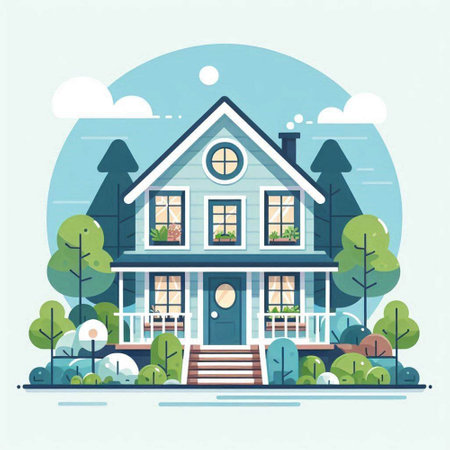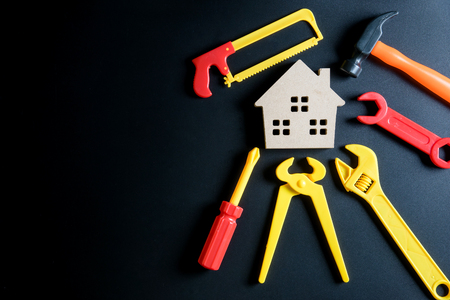1. Assessing Your Backyard Space and Climate
Before you start planting or adding landscaping features, it’s important to understand the specific conditions of your backyard. This helps you choose plants and designs that will thrive in your environment and suit your lifestyle.
Know the Size and Layout of Your Yard
Start by measuring your backyard. Knowing the dimensions helps you plan where to place garden beds, walkways, patios, or water features. Sketch a simple layout including existing elements like trees, fences, and structures.
Observe Sunlight Exposure
Take note of how much sunlight different parts of your yard receive throughout the day. Most plants fall into one of three categories based on sunlight needs:
| Sunlight Level | Description | Examples of Suitable Plants |
|---|---|---|
| Full Sun | 6+ hours of direct sunlight per day | Lavender, Tomatoes, Coneflowers |
| Partial Sun/Shade | 3–6 hours of direct sunlight per day | Hostas, Hydrangeas, Ferns |
| Full Shade | Less than 3 hours of direct sunlight per day | Impatiens, Coral Bells, Astilbe |
Test Your Soil Type
The type of soil in your yard affects drainage and nutrient availability for plants. You can do a simple soil test using a kit from a garden center or send a sample to your local cooperative extension office. Common soil types include:
- Sandy Soil: Drains quickly but doesn’t hold nutrients well.
- Clay Soil: Holds water and nutrients but may cause drainage issues.
- Loamy Soil: A balanced mix; ideal for most plants.
Check Your USDA Hardiness Zone
The USDA Hardiness Zone Map divides the U.S. into zones based on average minimum winter temperatures. Knowing your zone helps you pick plants that can survive year-round in your area. You can find your zone by entering your ZIP code on the USDA’s website.
| USDA Zone | Temperature Range (°F) | Example Cities |
|---|---|---|
| Zone 4 | -30 to -20°F | Minnesota, parts of Montana |
| Zone 7 | 0 to 10°F | Tennessee, Northern Texas |
| Zone 10 | 30 to 40°F | Southern Florida, Coastal California |
Create a Microclimate Map of Your Yard
Your backyard might have microclimates—small areas with slightly different sun, wind, or moisture conditions. For example, a corner near the house may be warmer due to reflected heat. Observing these variations helps with plant placement and feature design.
Tips for Noting Microclimates:
- Watch where snow melts first in spring—it’s usually warmer there.
- Note where water tends to collect after rain—these areas may need better drainage.
- Avoid planting delicate species in windy corners unless you add windbreaks.
This step-by-step assessment gives you the foundation for making smart choices as you transform your backyard into a functional and beautiful outdoor space.
2. Defining Your Landscaping Goals
Before you start picking out plants or hardscape features, it’s important to understand what you want your backyard to do for you. Is it a space where you’ll entertain guests? A peaceful retreat for relaxation? A fun zone for the kids? Or maybe a productive garden area? Identifying your main goal will help guide every decision you make.
Determine the Primary Use of Your Backyard
Think about how you spend your time outdoors—or how youd like to. Here are some common backyard goals and what types of plants and landscaping features work best for each one:
| Backyard Goal | Ideal Plants | Recommended Features |
|---|---|---|
| Entertainment | Low-maintenance shrubs, container plants, decorative grasses | Patio or deck, outdoor kitchen, fire pit, string lighting |
| Relaxation | Fragrant flowers (lavender, jasmine), shade trees, ferns | Water feature, hammock, pergola, cozy seating area |
| Gardening | Vegetables, herbs, fruit trees, pollinator-friendly flowers | Raised garden beds, compost bin, greenhouse or potting station |
| Play Area for Kids | Soft grass varieties, hardy ground covers, non-toxic plants | Swing set, sandbox, open lawn space, shaded areas for safety |
Consider Combining Multiple Goals
Your backyard doesn’t have to serve just one purpose. Many families create multifunctional spaces that blend entertainment with relaxation or play with gardening. When mixing purposes, use landscaping elements like hedges or pathways to visually divide the space and make transitions feel natural.
Tips for Blending Functions:
- Create zones: Use different materials (like pavers vs. mulch) to separate areas.
- Select adaptable plants: Choose greenery that fits more than one purpose—such as lavender for both fragrance and pollinators.
- Think vertically: Use trellises or vertical gardens in tight spaces to maximize function without crowding.
Your Lifestyle Influences Your Design Choices
If youre someone who loves hosting weekend barbecues but doesnt have time for weekly pruning and watering, lean toward low-maintenance landscaping. On the other hand, if gardening is your hobby, choosing a mix of edible plants and seasonal blooms can be highly rewarding. Always match your design with how much time and effort you’re willing to invest in upkeep.

3. Choosing the Right Plants for Your Region
Picking the right plants for your backyard isn’t just about looks—it’s also about choosing greenery that fits your local climate and soil conditions. By selecting native and climate-appropriate plants, you’ll create a landscape that not only thrives but also saves water and reduces maintenance time.
Why Native and Climate-Appropriate Plants Matter
Native plants are adapted to your region’s natural environment. They’ve evolved to grow in your specific soil, handle your weather patterns, and resist local pests. This means less work for you and a healthier backyard ecosystem. Climate-appropriate plants, even if not native, are those that can handle your areas temperature ranges, rainfall levels, and sunlight without constant care.
Benefits of Choosing Native and Climate-Friendly Plants
- Low Maintenance: Less pruning, fertilizing, and pest control needed.
- Water Efficient: These plants are used to local rainfall levels, helping you conserve water.
- Eco-Friendly: Support local wildlife like birds and pollinators.
- Saves Money: Lower water bills and fewer gardening supplies.
How to Find Out What Grows Best in Your Area
Your USDA Plant Hardiness Zone is a great starting point. It tells you what types of plants can survive in your area based on average low temperatures. You can also visit local garden centers or reach out to a nearby cooperative extension office for expert advice tailored to your region.
Quick Guide: Suggested Plant Types by U.S. Region
| Region | Suggested Native or Climate-Appropriate Plants |
|---|---|
| Northeast | Echinacea (coneflower), Black-eyed Susan, Serviceberry |
| Southeast | Crape Myrtle, Coral Honeysuckle, Southern Magnolia |
| Midwest | Purple Prairie Clover, Little Bluestem Grass, Wild Bergamot |
| Southwest | Lantana, Desert Marigold, Agave |
| Pacific Northwest | Sword Fern, Red Flowering Currant, Oregon Grape |
| West Coast/California | California Poppy, Toyon, Manzanita |
Tips for Selecting the Right Plants for Your Backyard
- Group by Water Needs: Keep high-water-use plants together to make irrigation easier.
- Select Different Bloom Times: Choose a mix of plants that flower in different seasons for year-round color.
- Add Variety: Mix shrubs, grasses, flowers, and ground covers for texture and depth.
- Avoid Invasive Species: These can overtake your yard and harm native ecosystems.
Your Next Step
A little research goes a long way. Take note of your yard’s sun exposure, soil type, and available space before heading to the nursery. Don’t be afraid to ask local experts what works best—they know your area best!
4. Incorporating Functional Landscaping Features
When transforming your backyard, its not just about the plants—you also want to think about how youll use the space. Functional landscaping features can make your yard more enjoyable and easier to navigate, while also adding visual interest. From cozy fire pits to charming garden paths, choosing the right elements will help tie everything together and create a space that feels both beautiful and practical.
Popular Functional Features to Consider
Here are some common landscaping features that can enhance both the functionality and style of your backyard:
| Feature | Description | Best For |
|---|---|---|
| Pathways | Create clear walking routes through your yard using materials like stone, gravel, or pavers. | Connecting different areas such as the garden, patio, or shed |
| Patios | A flat outdoor space for dining or relaxing; often made of concrete, brick, or flagstone. | Outdoor entertaining and dining spaces |
| Fire Pits | Add warmth and ambiance; great for evening gatherings with family or friends. | Cooler climates or social spaces |
| Water Features | Includes fountains, ponds, or small waterfalls; brings a calming effect and visual interest. | Creating a peaceful atmosphere |
Choosing Features That Match Your Style
Your chosen elements should reflect your personal style and match the overall design of your backyard. If you’re going for a modern look, clean lines and minimalist water features may work best. For a rustic feel, consider natural stone patios or wooden pathways.
Design Tip:
Before installing any feature, sketch out a basic layout of your yard. Think about traffic flow—how people will move through the space—and place features where they’ll be most useful and visually appealing.
Combining Function with Beauty
The best backyards strike a balance between function and aesthetics. Try mixing plants with hardscaping elements to soften edges and create harmony. For example, line a walkway with low shrubs or flowers to blend nature with structure.
Pro Tip:
Add outdoor lighting along paths and around patios to extend usability into the evening hours while highlighting key landscape elements.
By thoughtfully incorporating functional landscaping features, you can turn your backyard into an inviting extension of your home that’s perfect for relaxing, entertaining, or simply enjoying the outdoors.
5. Balancing Aesthetics with Maintenance
When designing your backyard, it’s easy to get carried away with beautiful plants and elaborate landscaping features. But before you commit, think about how much time and energy youre really willing to spend maintaining your outdoor space. The key is finding the right balance between visual appeal and ease of care.
Choose Low-Maintenance Plants That Still Look Great
Some plants look stunning but require constant pruning, watering, or pest control. Others might not be as flashy but can thrive with minimal attention. If you’re not an avid gardener—or just don’t have the time—go for low-maintenance options that still provide color and texture throughout the seasons.
Examples of Low-Maintenance Plants by Region
| Region | Plant Options | Year-Round Appeal |
|---|---|---|
| Southwest | Agave, Lavender, Red Yucca | Drought-tolerant, evergreen foliage, seasonal blooms |
| Northeast | Hostas, Boxwood, Hydrangea | Colorful summer flowers, lush green leaves, winter structure |
| Southeast | Crape Myrtle, Azaleas, Liriope | Bright spring/summer blooms, evergreen groundcover |
| Pacific Northwest | Ferns, Rhododendrons, Japanese Maple | Layered greenery, vibrant fall foliage |
Select Materials That Age Well and Require Little Upkeep
Your choice of hardscape materials—like pavers, mulch, gravel paths, or decking—can make a big difference in ongoing maintenance. For example, composite decking resists rot and fading better than wood. Gravel paths drain well and don’t need mowing like grass.
Material Comparison for Backyard Features
| Feature | Low-Maintenance Option | Benefits |
|---|---|---|
| Decking | Composite Decking | No staining or sealing needed; weather-resistant |
| Pathways | Paver Stones or Gravel | Durable; no mowing or edging required |
| Mulch Beds | Bark Mulch or Rubber Mulch | Suppresses weeds; retains moisture; long-lasting color |
Create Layers and Contrast Without Extra Work
You can still get a dynamic look without constant effort by mixing plant heights and textures wisely. Use evergreen shrubs for year-round structure, add ornamental grasses for movement, and sprinkle in perennials for bursts of seasonal color. Stick to native species when possible—they’re already adapted to your local climate and require less attention.
Pro Tip:
If you love color but hate replanting every season, focus on perennials that bloom at different times of the year. This way your yard stays interesting month after month with minimal effort.
The goal isn’t to eliminate maintenance completely—it’s to design a space that matches your lifestyle while still bringing you joy every time you step outside.


